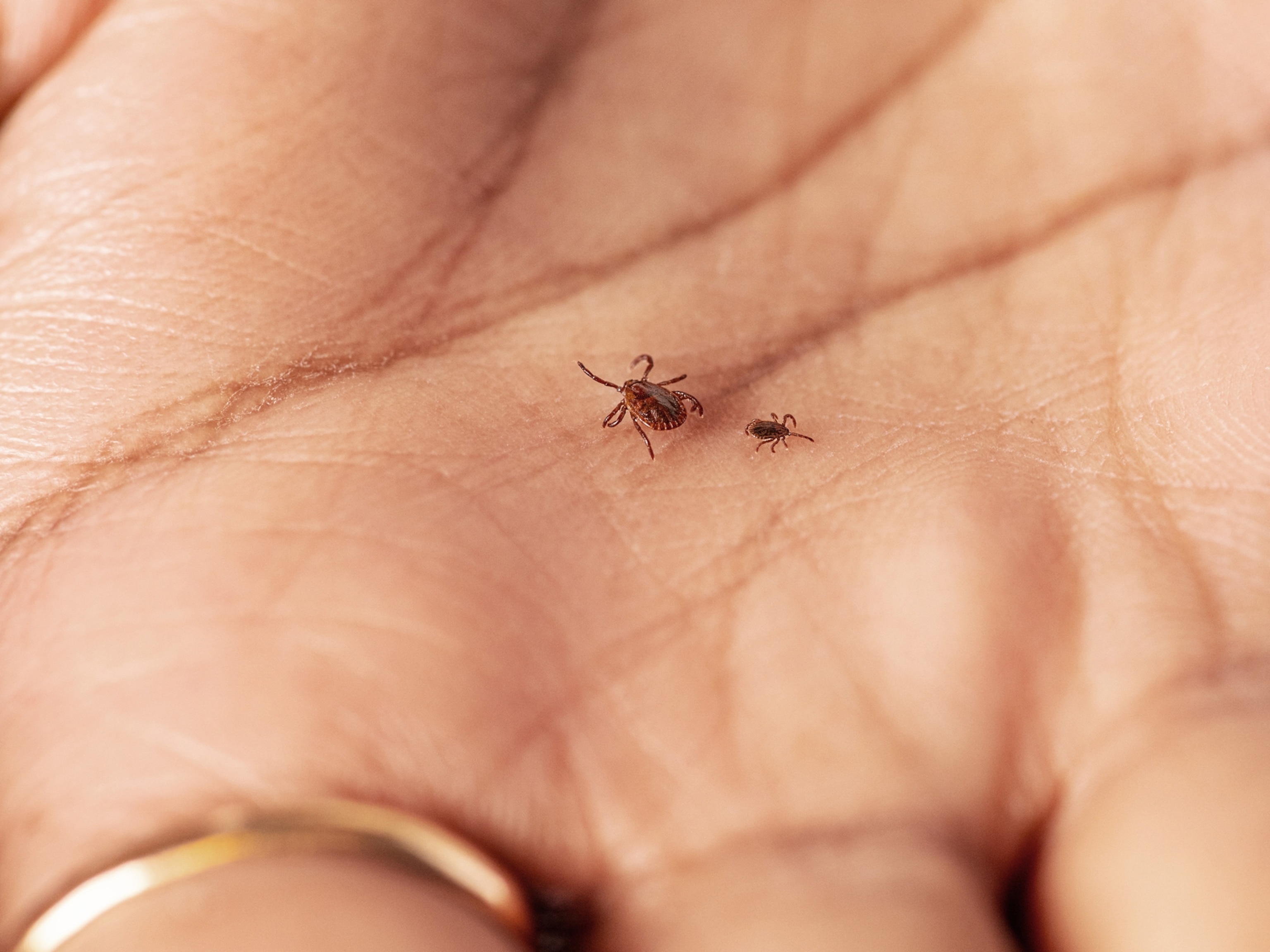This tick bite could make you allergic to red meat—and it’s spreading
Alpha-gal syndrome, spread by bites from the Lone Star tick, was originally found primarily in the southeastern U.S.—but is now moving north and west as temperatures warm.

Alpha-gal may sound empowering, but the nickname, short for galactose-alpha-1, 3-galactose, is a sugar molecule that might just cause you to become allergic to meat.
The sugar molecule is spread from the Lone Star tick bite, named for the single star-shaped spot marking on its back.
A new study by the Centers for Disease Control and Prevention found that the number of suspected cases in the United States has increased substantially since 2010—and some were identified in states not typically known as stomping grounds for these bloodsucking parasites.
Once bitten by a Lone Star tick, the body's immune system is rewired.
"You're walking through the woods, and that tick has had a meal of cow blood or mammal blood," explains Cosby Stone, an allergy and immunology fellow at Vanderbilt University. "The tick, carrying alpha-gal, bites you and activates your allergy immune system."
(A brief history of allergies)
From this, your body creates alpha-gal antibodies and, from that point on, the body is wired to fight alpha-gal sugar molecules. The majority of people who develop alpha-gal syndrome (AGS) realize their illness after eating meat, which is rife with alpha-gal. The sugar is also present in some medications that use gelatins as stabilizers.
"There's a time delay in the reaction," says Stone, which accounts for why some people don't always immediately realize they're having a reaction. "It [the alpha-gal] has to first travel through your gastrointestinal tract to be released. Hours later, patients wake up with hives, shortness of breath, vomiting, and diarrhea."
In rare cases, patients have to be admitted to the ICU.
"Some patients have had to be given life support because their blood pressure is so low that they're in eminent danger of dying," says Stone, who has treated those suffering a reaction.
"Most patients don't know what they have," he explained. It often takes repeated allergic reactions for people to link their diet to their outbreak. Repeated exposure to tick bites can also worsen the severity of a reaction. Those who developed more alpha-gal antibodies from more exposure to ticks saw the most serious symptoms.
The allergy so far has treatments for side effects but no cure or vaccine.
Is it on the rise?
Originally found primarily in the southeastern U.S., the disease may become more common in farther north and western regions that experience warming temperatures.
The CDC does not log cases of AGS, so most of the previous reports of the rise in suspected cases have been anecdotal. But the new study—which examined antibody testing results submitted to the laboratory responsible for nearly all testing in the U.S.—found that the number of people who tested positive for AGS spiked over a five-year period: from 13,371 in 2017 to 18,885 in 2021.
Until cases were first identified about a decade ago, little to nothing was known about the origin of this meat allergy.
"The awareness of alpha-gal has grown," notes Stone. "It's also possible that because allergies in general are going up, reactions to alpha-gal are increasing."
Studies have documented that warming temperatures have led to an increase in plant-based allergies from allergens like pollen.
Stone believes advancements in hygiene have led to a weakening of some of the natural immunity we develop to fight allergies.
In an interview with USA Today, Purvi Parikh from the Allergy and Asthma Network warned that as the climate has warmed, ticks have begun to spread their territory farther north.
Regardless, humans come into contact with ticks more frequently during warmer weather, and Stone recommends warding off alpha-gal in the same way other tick-borne illnesses are prevented: use insect repellent, pretreat clothes, and avoid high grass and shrubbery.
(Here are more ways to spot—and avoid—ticks.)





